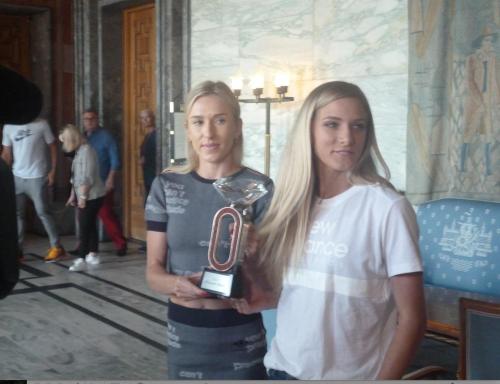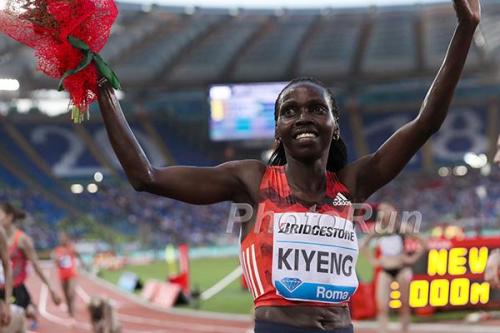 Karoline Grovdal and Emma Coburn, photo by Stuart Weir
Karoline Grovdal and Emma Coburn, photo by Stuart Weir
 Emma Coburn vs Karoline Grovdal poster, photo by Stuart Weir
Emma Coburn vs Karoline Grovdal poster, photo by Stuart Weir
RelatedPosts
Women’s 3000m Steeplechase ends in farce
I had a sense of foreboding about the women’s 3000m steeplechase even before it happened. The press conference and the clever, if left field, posters both featured the race as a duel between Norway’s Karoline Bjerkkeli Grøvdal and the American, Emma Coburn. They are both fine runners but how can you leave out of the equation the former world champion, Olympic silver medallist, 2018 world lead and winner of the previous Diamond League Steeplechase, Hyvin Kiyeng? Well, Kiyeng duly won the race. But sadly that was not the main story.
I first became aware that there had been a problem when I spoke to the British athlete, Rosie Clarke, about her race. She commented: “Frustrating. It would help if they could put the barriers at the right height. With three laps we had a barrier at men’s height which was not ideal”. Don’t you love the British understatement – that having a barrier at the wrong height was “not ideal”!
The next development was that Gene Cherry, the DL media delegate, whispered in my ear that he understood that there had been a problem with the height of a barrier. Then we were informed that the competition director. Terje Hoffmann, would make a statement to the media. Gene and I duly presented ourselves but the location was where all the Norwegian media were gathered. Hoffmann made a statement and answered questions at length – in Norwegian. After this, Gene collared him and asked for a short summary of what had happened.
The statement that he made and which was circulated to the press afterwards said: “The short version is that we made a terrible mistake. It shouldn’t have happened and we apologise to the athletes. They have our deepest sympathy. It affected the three first barriers and then the four last was correct”.
The statement is ambiguous. The reality is that one barrier was set at men’s height of 91 centimeters instead of the correct height for women of 76 centimeters. The error was corrected after three laps – ie athletes went over the barrier at the wrong height on the first three laps but not on the last four. While not in the written statement, in answer to the question, Hoffmann said that any record set would stand as the error had been to athletes’ disadvantage.
Coburn shed further light on the farcical events: “I’m incredibly frustrated that we had to hurdle the men’s barrier on the back straight three times – we were waving around and it wasn’t solved until my husband went out onto the track to tell the officials”.
Coburn who lost her chance to win in Rome last week when she fell at the water jump on the final lap, added about the Oslo race: “It panicked me but I tried to stay calm and feel as easy as possible from then on. After the stress, the pace slowed down a lot but today was a step in the right direction for me – I fell in Rome which was my fault but today wasn’t my fault, but I will keep working hard and try to forget it now”.
 Hyvin Kiyeng, photo by PhotoRun.net
Hyvin Kiyeng, photo by PhotoRun.net
Kiyeng, who won by 7 hundredths of a second, commented: “It was all about the win, I was not thinking about the times at all. I had some injuries in Rome and wanted to continue in winning. Fast times will come later in July”.
Author

Since 2015, Stuart Weir has written for RunBlogRun. He attends about 20 events a year including all most global championships and Diamond Leagues. He enjoys finding the quirky and obscure story.
View all posts




















